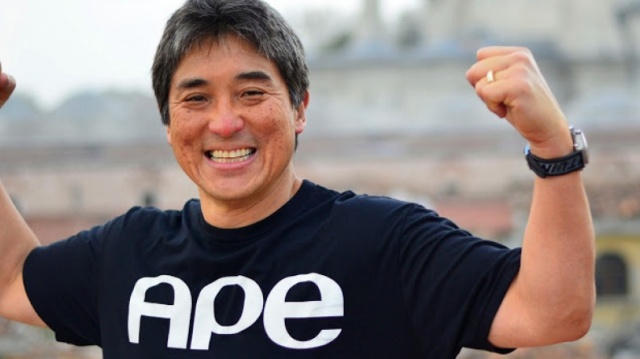1) Make Meaning… not money
Make the world a better place. When you are building something ask yourself “is this making the world a better place?”
2) Make Mantra
Most people come up with a Mission Statement. Most mission statements are developed through the following process.
- 50 senior employees have an off site week. This is usually run out of a hotel with a golf course
- The company will bring in an external consultant. Most often a woman. Most often wearing all black and a turtle neck. Most often she will also have a dual career and moonlight as a lemans coach because getting a mission statement is similar to delivering a baby.
- Cross functional team building. Fall into each others arms and sing Kumbaya.
- Once this has happened for 2 days everyone is pissed off that their time has been wasted so they want at least one word in the missions statement. This is why Mission statements are super long and bullshit.
Don’t have a mission statement, have a mantra.
- FedEx: Peach of Mind
- Nike: Authentic Athletic Performance
Explain your goal in 3 words.
3) Jump to the next curve
In the beginning there were ice farmers. Ice farmers would go to frozen lakes and rivers and cut lines in the ice and farm the ice. This is 1.0.
Next came centralised ice factories. These were huge buildings filled with giant freezers. The freezers would produce the ice and they would have vans that would go out and deliver the ice to people who needed it. This is 2.0.
Lastly came the fridge. This is your own personal ice factory. This is 3.0.
The Ice Farmers never jumped to become Ice Factories. The owners of Ice Factories never jumped to build Fridges.
You must be able to jump to the next curve.
You should always define yourself by what you provide, not what you do. These examples were all about providing a clean and cold environment, not about the farming or the factories or the machine.
- Uber: Transport
- AirBnB: Hotels
- TaskRabbit: Errands
4) Roll the Dice
You need to be able to stand out from the crowd. The chances are there’s going to be other people competing in your area. You need to roll the dice.
For that you need to focus on 5 things
- Depth: Reef came out with a thong with a beer bottle attached in the sole. This doubled its usefulness.
- Intelligence: MyKey from Ford allows the owner of the car to program the key and set a maximum speed of the car. Intelligence.
- Complete: If you’re building a service then provide it entirely. Produce documentation, API’s, Video training, Webinars.
- Empowering: The product should make you feel like you can accomplish more. The Dell is just shit. It competes on price. The Apple Air makes you feel empowered, like you can do anything.
- Elegant: Herman Miller changed the face of chairs through a beautiful elegant design.
5) Don’t worry, be crappy.
Ship your product even though it has some shitty bits. That doesn’t mean ship a shitty product, it means it doesn’t have to do everything before you ship 1.0.
By being first to launch you gain all the benefits because there’s nothing else out there that can compete with you.
6) Let 100 flowers blossom
If people want to use your product in a different way, go with it and reproach the market in a new way.
A skin care product called “Skinbesoft” was released. It was a luxury product that was targeted at middle aged women to help keen their skin looking young and soft. The product sold well with their target market, however it wasn’t because it kept their skin soft. Instead the mothers found that it was an excellent insect repellent and wasn’t as harsh as DDT on the skin of their children.
This was the point at which they should have kept the product but changed their approach and marketed it in a different way.
Let your product blossom where ever it can.
7) Polarize People
Great products polarise people. Great products create emotion, emotions can cause polarity.
This of the Mac vs Windows, the iOS vs Android. The iPhone and Samsung S4. These consumers are polarised and LOVE their product. Great products polarise people.
8) Churn, baby Churn
Listen to your customers after launch. Adapt to your changing customers needs. If you’re willing and able to churn then you’re in the perfect place to jump to the next curve.
If you miss the next curve you’ll never make the double jump.
Don’t be afraid to churn and adapt to the changing market. Focus on what you’re providing, not how you’re doing it.
9) Niche thyself
On a simple graph of Uniqueness vs Value. Gartner or another analysis will charge you $500,000 to explain this to you. Here’s the break down in 4 simple bullet points ($125,000 per point).
- Unique=0, Value=100: This corner, bottom right, is all about the price. It’s the Dell approach to computing. The value of Dell is huge however it’s not unique at all, therefore you’ve got thousands of competitors all vying for the best price.
- Unique=100, Value=0: This corner, top left, is called the Stupid corner. You have a product that is completely unique, but there’s absolutely no value in it. Quit, or be acquired by Google.
- Unique=0, Value=0: This corner, bottom left, is the dot.com corner. This is the dogfood .com example. When the dot.com boom hit people bought petfood.com. This was based upon the following idea. There are 69,926,000 dogs with owners in the US. Each of those dogs will eat at least 1 can of dog food every day. That’s 69,926,000 cans of dog food consumed every day, or 25,522,990,000 cans of dog food every year. The supply chain of dog food goes Cow – Killed – Chopped – Canned – Store – Consumer. By cutting out the Store you could save the consumer the hassle of driving to the store and the additional markup on dog food to help pay for the storefront and employees to stack the shelves and serve the customer at the till. If you could conservatively get 1% of the market and made just $1 per can of dog food then your income would be $699,260 PER DAY; $4,894,820 PER WEEK; and $255,229,900 PER YEAR. Even at 0.5% of the market that is a huge amount of profit. To get that 1% you need to be cheaper or more convenient. You can drop the price by $1 because you’re without the storefront and employee’s, but now you need to factor in the shipping costs to send out these cans of dog food to your 1% of home shoppers. That adds the $1 back onto the price. Well lets focus on the convenience. Now the dog owners don’t have to get in their car and drive all the way to the store, but because the dog food is delivered by a courier then they need to be at home to receive the dog food, and the courier will be there between 8am and 12pm, or 1pm and 5pm. Now the dog owner has to stay at home for half the day to buy a can of dog food for the same price they can get it from the shop because it’s more convenient for them… oh wait it’s not. Finally, because you can make over 1/4 of a trillion dollars with just 1% of the market you have petfood.com, dogfood.com, pets.com, dogs.com and thousands of other competitors. ZERO VALUE, ZERO UNIQUENESS.
-
Fandango – Buy tickets for a movie and guarantee your seat. You don’t need to line up when you get there. Unique and convenient.
Smart Car.
10) Perfect your pitch.
Customise your introduction. This creates a sense of comfort within the room that the pitch is designed just for the client. Take pictures of yourself with the product they sell, the the city they are based… something to customise your pitch.
Follow the 10 – 20 – 30 rule.
10: Slides. No more.
20: Minutes. No more. It could take 40 minutes to get the wifi and projector working… you need to be able to nail your pitch with the time you have left. No one has ever been disappointed that a meeting has finished before the hour mark.
30: Point Size. This is the easiest to read. If you need to reduce the point size to fit text on the screen then you’ve got too much text. What usually happen 15 seconds into a presentation like this is that the audience will realise you’re reading the slide and work out that they can read faster than you can talk… and then you’ve lost them. Another way to look at it is halve the audience age. 70yo=35pt, 60yo=30pt, 40yo=20pt.

